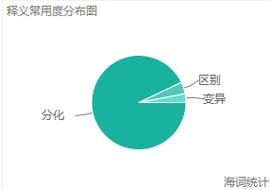
Understanding the Differences Between Oceanic and Continental Plates
Have you ever wondered what sets oceanic and continental plates apart? These two types of tectonic plates play a crucial role in shaping the Earth’s surface and influencing geological processes. In this article, we will delve into the differences between oceanic and continental plates from various dimensions, providing you with a comprehensive understanding of their unique characteristics.
Size and Thickness
One of the most noticeable differences between oceanic and continental plates is their size and thickness. Oceanic plates are generally much thinner, ranging from 5 to 100 kilometers in thickness, while continental plates can be up to 200 kilometers thick. This difference in thickness is primarily due to the composition of the two types of plates.

| Feature | Oceanic Plate | Continental Plate |
|---|---|---|
| Thickness | 5-100 km | Up to 200 km |
| Size | Smaller | Bigger |
Composition
The composition of oceanic and continental plates is another significant difference. Oceanic plates are primarily composed of basalt, a dense and heavy rock type. This composition contributes to their thinner and denser nature. On the other hand, continental plates are made up of granite, a lighter and less dense rock type. The lighter composition of continental plates is one of the reasons they are thicker and less dense than oceanic plates.
Age
Age is another crucial factor that distinguishes oceanic and continental plates. Oceanic plates are relatively young, with an average age of about 100 million years. They are continuously formed at mid-ocean ridges, where new crust is created as magma rises from the mantle. In contrast, continental plates are much older, with some parts of the plates being over 3 billion years old. This age difference is due to the slower rate of formation and the recycling process of oceanic crust.
Temperature
The temperature of the mantle beneath oceanic and continental plates also varies significantly. The mantle beneath oceanic plates is generally cooler, with temperatures ranging from 500 to 1300 degrees Celsius. This cooler temperature is a result of the younger age and lower thickness of oceanic plates. In contrast, the mantle beneath continental plates is hotter, with temperatures ranging from 700 to 1400 degrees Celsius. The hotter temperature is due to the older age and thicker nature of continental plates.
Convection Currents
Convection currents in the mantle are responsible for the movement of tectonic plates. The differences in temperature and density between oceanic and continental plates affect the convection currents. Oceanic plates are denser and cooler, causing them to sink into the mantle at subduction zones. This process leads to the recycling of oceanic crust. Continental plates, being less dense and thicker, are less likely to sink into the mantle. Instead, they tend to collide with other plates, leading to the formation of mountain ranges and other geological features.

Impact on Earth’s Surface
The differences between oceanic and continental plates have a profound impact on the Earth’s surface. Oceanic plates are responsible for the formation of mid-ocean ridges, trenches, and volcanic islands. Continental plates, on the other hand, contribute to the creation of mountain ranges, rift valleys, and other geological features. The interaction between these plates also leads to earthquakes, tsunamis, and other natural disasters.
In conclusion, oceanic and continental plates differ in size, thickness, composition, age, temperature, and their impact on the Earth’s surface. Understanding these differences is crucial for comprehending the complex geological processes that shape our planet. By exploring the unique characteristics of these plates, we can gain a deeper appreciation for the dynamic nature of our planet and the ever-changing landscape it supports.




